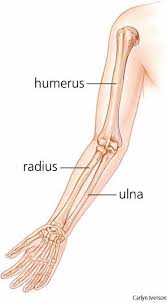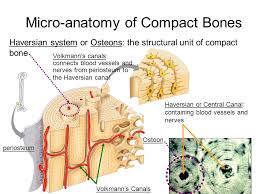While bone pain is most likely due to decreased bone density or an injury to your bone, it can also be a sign of a serious underlying medical condition. Bone pain or tenderness could be the result of infection, an interruption in the blood supply, or cancer. These conditions require immediate medical attention.
Bone density testing is used to assess the strength of the bones and the probability of fracture in persons at risk for osteoporosis. The test, referred to as bone densitometry or bone mineral density scan (BMD), is a simple, noninvasive procedure that takes just minutes.
Normal is a T-score of −1.0 or higher. Osteopenia is defined as between −1.0 and −2.5. Osteoporosis is defined as −2.5 or lower, meaning a bone density that is two and a half standard deviations below the mean of a 30-year-old man/woman.
A bone mineral density (BMD) test is can provide a snapshot of your bone health. The test can identify osteoporosis, determine your risk for fractures (broken bones), and measure your response to osteoporosis treatment.
Central DXA. National Osteoporosis Foundation (NOF) recommends a bone density test of the hip and spine using a central DEXA machine to diagnose osteoporosis. DEXA stands for Dual Energy X-ray Absorptiometry. When testing can't be done on the hip and spine, NOF suggests a central DEXA test of the radius bone in the forearm. The most common and accurate way uses a dual-energy x-ray absorptiometry (DEXA) scan. DEXA uses low-dose x-rays. (You receive more radiation with a chest x-ray.)

The amount of radiation you're exposed to is very low, much less than the amount emitted during a chest X-ray. The test usually takes about 10 to 30 minutes. A small, portable machine can measure bone density in the bones at the far ends of your skeleton, such as those in your finger, wrist or heel.
In bone density tests, a t score compares bone mineral density to a reference mean.
Why am I getting bone pain?
Bone pain can occur with injuries or conditions such as: Cancer in the bones (primary malignancy) Cancer that has spread to the bones (metastatic malignancy) Disruption of blood supply (as in sickle cell anemia)
Why do the bones in my legs hurt?
Causes. Most leg pain results from wear and tear, overuse, or injuries in joints or bones or in muscles, ligaments, tendons or other soft tissues. Some types of leg pain can be traced to problems in your lower spine. Leg pain can also be caused by blood clots, varicose veins or poor circulation.
Do you have nerves in your bones?
Broken bones hurt, but there are actually no pain nerves inside your bones. ... Well, the hard, white covering of the bone, which is called the periosteum, is damaged when you break a bone. There are nerves and blood vessels inside the periosteum. They send the message to the brain, and then you feel pain.




In anatomy the endosteum (plural endostea) is a thin vascular membrane of connective tissue that lines the inner surface of the bony tissue that forms the medullary cavity of long bones.
Periosteum consists of an outer fibrous connective tissue layer and an inner osteogenic layer. The fibrous layer is made of dense irregular connective tissue containing many strong collagen fibers and fibroblast cells.


Why do all of my joints hurt?
Pain is also a feature of joint inflammation (arthritis, such as rheumatoid arthritis and osteoarthritis) and infection, and extremely rarely it can be a cause of cancer of the joint. Pain within the joint is a common cause of shoulder pain, ankle pain, and knee pain. Joint pain is also referred to as arthralgia.
Why is my body so sore all the time?
Usually, the discomfort is most prominent in the muscles and joints. Aches and pains are common during viral infections, such as colds. Generalized aches and pains are one of the most common symptoms of influenza. Additional common causes for aches and pains include exercise, stress, depression, and drug side effects.
Why is body pain?
Often, people who experience muscle aches can easily pinpoint the cause. This is because most instances of myalgia result from too much stress, tension, or physical activity. Some common causes include: muscle tension in one or more areas of the body.
DVTs typically form in the lower leg after long periods of bed rest, causing swelling and cramping pain. Arthritis is an inflammation of the joints. ... Infection in the bone or tissues of the leg can cause swelling, redness, or pain in the affected area. Nerve damage in the leg may cause numbness, pain, or tingling.
Is there blood in your bones?
The inside of your bones are filled with a soft tissue called marrow. There are two types of bone marrow: red and yellow. Red bone marrow is where all new red blood cells, white blood cells, and platelets are made.
Bone density testing is used to assess the strength of the bones and the probability of fracture in persons at risk for osteoporosis. The test, referred to as bone densitometry or bone mineral density scan (BMD), is a simple, noninvasive procedure that takes just minutes.
Normal is a T-score of −1.0 or higher. Osteopenia is defined as between −1.0 and −2.5. Osteoporosis is defined as −2.5 or lower, meaning a bone density that is two and a half standard deviations below the mean of a 30-year-old man/woman.
A bone mineral density (BMD) test is can provide a snapshot of your bone health. The test can identify osteoporosis, determine your risk for fractures (broken bones), and measure your response to osteoporosis treatment.
Central DXA. National Osteoporosis Foundation (NOF) recommends a bone density test of the hip and spine using a central DEXA machine to diagnose osteoporosis. DEXA stands for Dual Energy X-ray Absorptiometry. When testing can't be done on the hip and spine, NOF suggests a central DEXA test of the radius bone in the forearm. The most common and accurate way uses a dual-energy x-ray absorptiometry (DEXA) scan. DEXA uses low-dose x-rays. (You receive more radiation with a chest x-ray.)
The amount of radiation you're exposed to is very low, much less than the amount emitted during a chest X-ray. The test usually takes about 10 to 30 minutes. A small, portable machine can measure bone density in the bones at the far ends of your skeleton, such as those in your finger, wrist or heel.
In bone density tests, a t score compares bone mineral density to a reference mean.
Why am I getting bone pain?
Bone pain can occur with injuries or conditions such as: Cancer in the bones (primary malignancy) Cancer that has spread to the bones (metastatic malignancy) Disruption of blood supply (as in sickle cell anemia)
Why do the bones in my legs hurt?
Causes. Most leg pain results from wear and tear, overuse, or injuries in joints or bones or in muscles, ligaments, tendons or other soft tissues. Some types of leg pain can be traced to problems in your lower spine. Leg pain can also be caused by blood clots, varicose veins or poor circulation.
Do you have nerves in your bones?
Broken bones hurt, but there are actually no pain nerves inside your bones. ... Well, the hard, white covering of the bone, which is called the periosteum, is damaged when you break a bone. There are nerves and blood vessels inside the periosteum. They send the message to the brain, and then you feel pain.
In anatomy the endosteum (plural endostea) is a thin vascular membrane of connective tissue that lines the inner surface of the bony tissue that forms the medullary cavity of long bones.
Periosteum consists of an outer fibrous connective tissue layer and an inner osteogenic layer. The fibrous layer is made of dense irregular connective tissue containing many strong collagen fibers and fibroblast cells.
Why do all of my joints hurt?
Pain is also a feature of joint inflammation (arthritis, such as rheumatoid arthritis and osteoarthritis) and infection, and extremely rarely it can be a cause of cancer of the joint. Pain within the joint is a common cause of shoulder pain, ankle pain, and knee pain. Joint pain is also referred to as arthralgia.
Why is my body so sore all the time?
Usually, the discomfort is most prominent in the muscles and joints. Aches and pains are common during viral infections, such as colds. Generalized aches and pains are one of the most common symptoms of influenza. Additional common causes for aches and pains include exercise, stress, depression, and drug side effects.
Why is body pain?
Often, people who experience muscle aches can easily pinpoint the cause. This is because most instances of myalgia result from too much stress, tension, or physical activity. Some common causes include: muscle tension in one or more areas of the body.
DVTs typically form in the lower leg after long periods of bed rest, causing swelling and cramping pain. Arthritis is an inflammation of the joints. ... Infection in the bone or tissues of the leg can cause swelling, redness, or pain in the affected area. Nerve damage in the leg may cause numbness, pain, or tingling.
Is there blood in your bones?
The inside of your bones are filled with a soft tissue called marrow. There are two types of bone marrow: red and yellow. Red bone marrow is where all new red blood cells, white blood cells, and platelets are made.

No comments:
Post a Comment